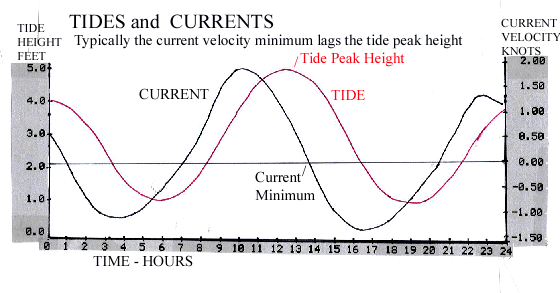
Best Tides For Striped Bass Fishing
This section reveals which phases of the tide are best for striped bass
Large, older, and wiser striped bass have learned that they don't have to waste energy chasing baitfish. They let the current bring the baitfish to them. They use the tides. The tides move in, the tides move out. Either way the tides set up currents that the striped bass use to feed.
The stripers feed when the water is moving. On the slack water that occurs at the tops and bottoms of the tide, the current diminishes and maybe stops. The stripers stop feeding.
When the tide peaks at its high point, the current is still moving in pretty fast. It doesn't totally stop and reverse direction for up to 2 hours past its peak height. See the figure below for a typical example case. You can see the lag between when the tide reaches its peak height and when the current reaches zero velocity. You must take this lag into consideration.
Although the stripers feed best when the tide is moving, they may sometimes hunker down during the middle of tides where the water is moving very fast.
Kathy Kronuch, from Johhny's at Montauk, recommended the last three hours of the incoming, and the first three hours of the outgoing, as the best stages of the tide to catch stripers. Captain Jim Freda af the Shore Catch Guide Service, recommends the top of the outgoing as best for striped bass.

Tides and Currents Chart - Example